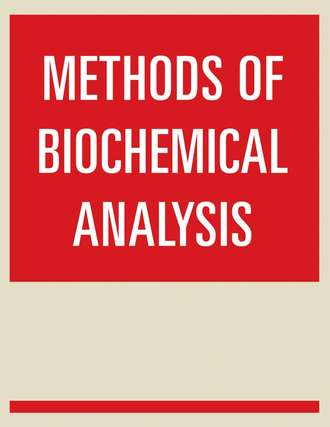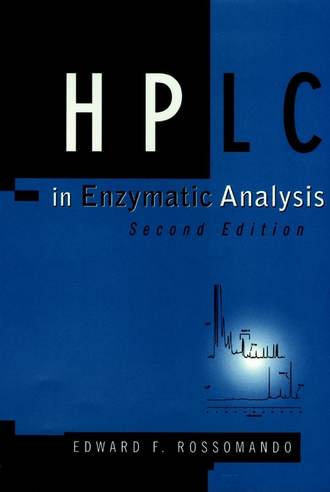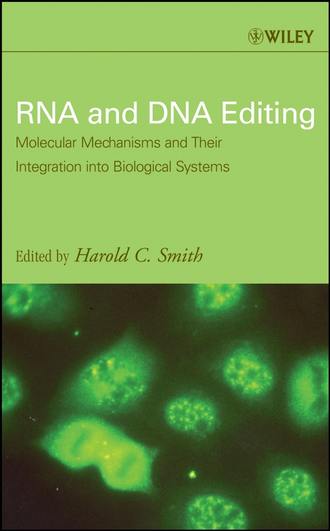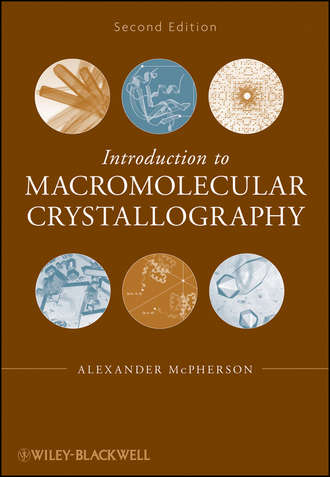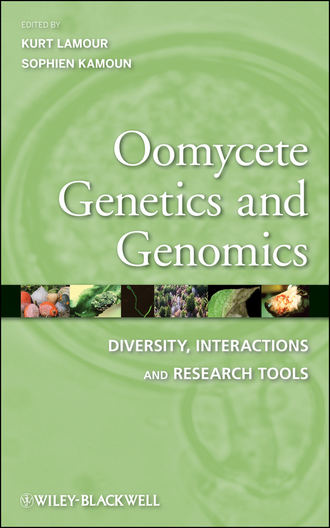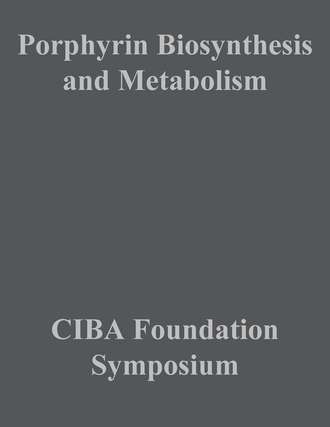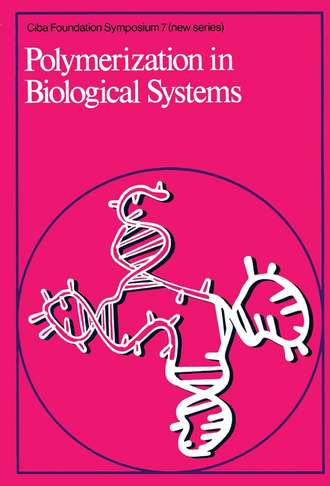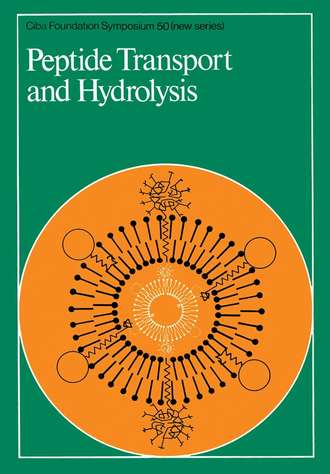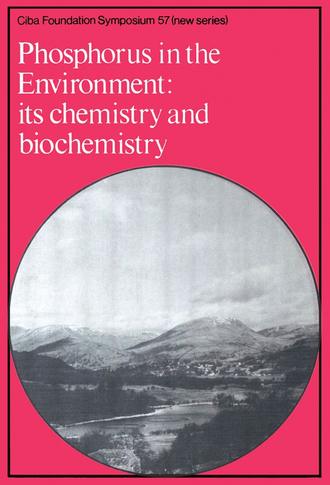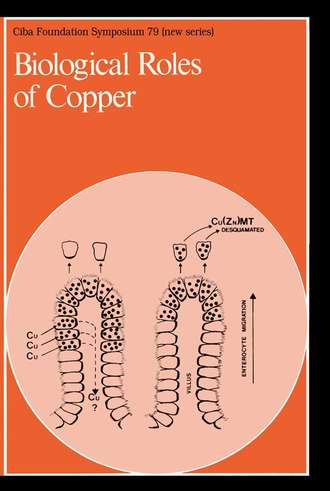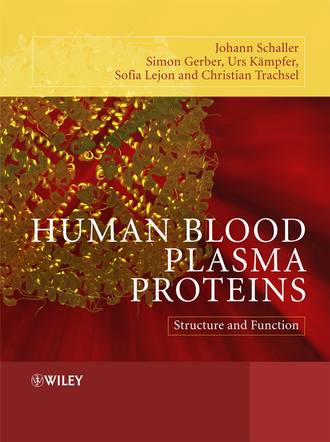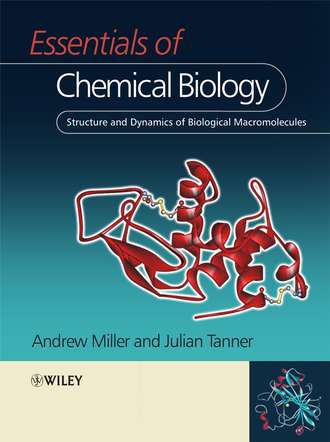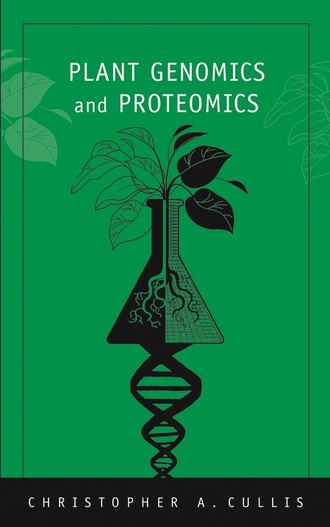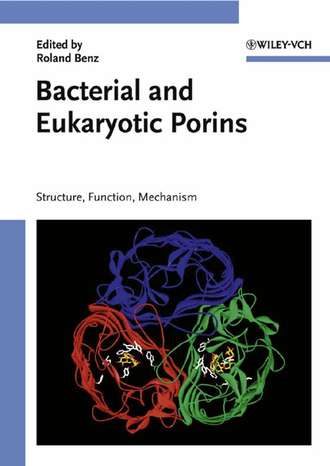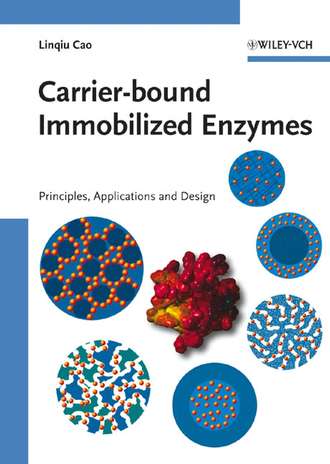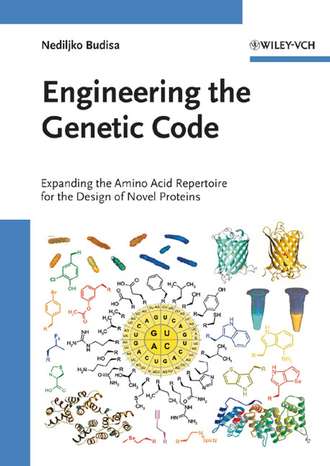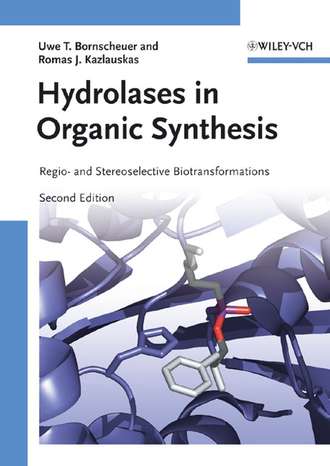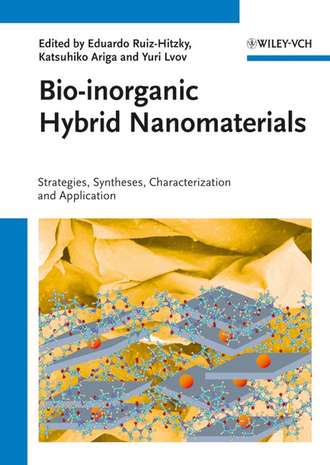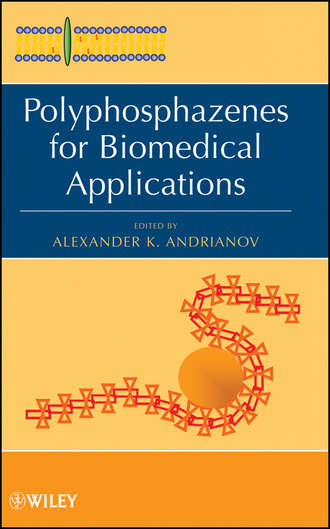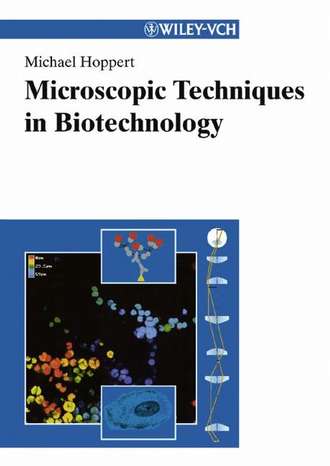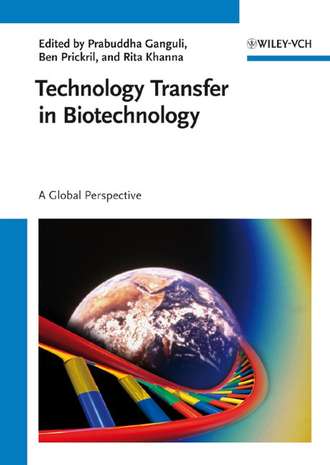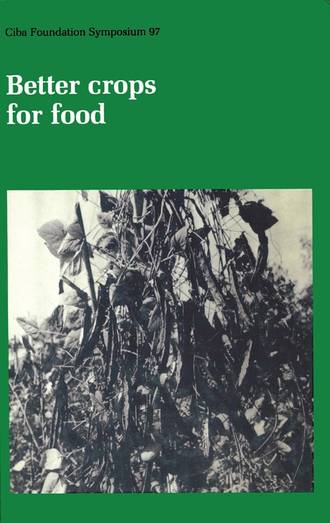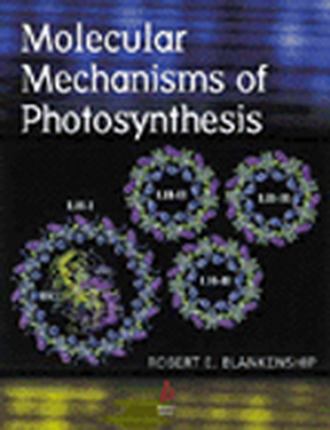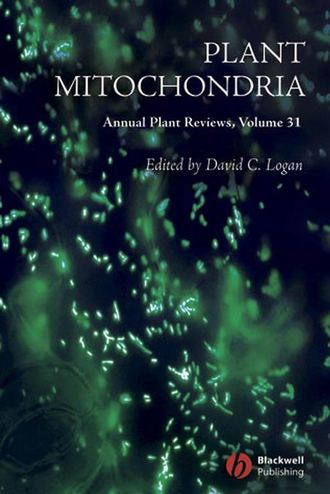зарубежная образовательная литература
Methods of Biochemical Analysis
Группа авторов
Biochemical analysis is a rapidly expanding field and is a key component of modern drug discovery and research. Methods of Biochemical Analysis provides a periodic and authoritative review of the latest achievements in biochemical analysis....
Methods of Biochemical Analysis
Группа авторов
Biochemical analysis is a rapidly expanding field and is a key component of modern drug discovery and research. Methods of Biochemical Analysis provides a periodic and authoritative review of the latest achievements in biochemical analysis....
HPLC in Enzymatic Analysis
Группа авторов
The use of High Performance Liquid Chromatography (HPLC) techniques in the study of enzymatic reactions has grown significantly since the publication of the first edition of this highly successful book: the role of enzymes in biological research...
RNA and DNA Editing
Группа авторов
RNA and DNA Editing assembles a team of leading experts who present the latest discoveries in the field alongside the latest models and methodology. In addition, the authors set forth the many open questions and suggest routes for further...
Dietary Supplements and Health
Gregory Bock R.
Dietary supplements can contain a wide variety of ingredients, either singly or in combination, including nutrients, botanicals and 'bioactive components' commonly found in foods. They are marketed and used by consumers for a range of reasons:...
Introduction to Macromolecular Crystallography
Группа авторов
A comprehensive and approachable introduction to crystallography – now updated in a valuable new edition The Second Edition of this well-received book continues to offer the most concise, authoritative, and easy-to-follow introduction to the...
Oomycete Genetics and Genomics
Sophien Kamoun
This book brings together the knowledge from and tools for genetic and genomic research into oomycetes to help solve the problems this pathogen poses to crops and animals. Armed with the information presented here, researchers can use oomycete...
Cyanide Compounds in Biology
David Evered
Comprises the proceedings of a symposium held at the Ciba Foundation, March 1988. Contributors present an international, interdisciplinary approach to the biology and biological chemistry of cyanide and related compounds. Addressed are the...
Host-Guest Molecular Interactions
Kate Widdows
Composed of contributions from experts in the chemical and biological sciences, it explores host-guest molecular interactions leading to the formation of molecular assemblies containing two or more species. Exciting applications are emerging in...
Somatostatin and Its Receptors
Gail Cardew
This book describes a diverse analysis of the five somatostatin receptors; somatostatin gene regulation; promatostatin processing; mechanisms of signal transduction; and the design and use of somatostatin analogues, including their possible...
Oligonucleotides as Therapeutic Agents
Gail Cardew
The use of oligonucleotides as therapeutic agents rests upon their ability to interfere, in a sequence-specific manner, with the fundamental machinery of protein synthesis either by binding to the mRNAs transcribed from a gene or by binding...
Porphyrin Biosynthesis and Metabolism
CIBA Foundation Symposium
The Novartis Foundation Series is a popular collection of the proceedings from Novartis Foundation Symposia, in which groups of leading scientists from a range of topics across biology, chemistry and medicine assembled to present papers and...
Quinones in Electron Transport
CIBA Foundation Symposium
The Novartis Foundation Series is a popular collection of the proceedings from Novartis Foundation Symposia, in which groups of leading scientists from a range of topics across biology, chemistry and medicine assembled to present papers and...
Polymerzation in Biological Systems
CIBA Foundation Symposium
The Novartis Foundation Series is a popular collection of the proceedings from Novartis Foundation Symposia, in which groups of leading scientists from a range of topics across biology, chemistry and medicine assembled to present papers and...
Purine and Pyrimidine Metabolism
CIBA Foundation Symposium
The Novartis Foundation Series is a popular collection of the proceedings from Novartis Foundation Symposia, in which groups of leading scientists from a range of topics across biology, chemistry and medicine assembled to present papers and...
Peptide Transport and Hydrolysis
CIBA Foundation Symposium
The Novartis Foundation Series is a popular collection of the proceedings from Novartis Foundation Symposia, in which groups of leading scientists from a range of topics across biology, chemistry and medicine assembled to present papers and...
Phosphorus in the Enviroment
CIBA Foundation Symposium
The Novartis Foundation Series is a popular collection of the proceedings from Novartis Foundation Symposia, in which groups of leading scientists from a range of topics across biology, chemistry and medicine assembled to present papers and...
Biological Roles of Copper
CIBA Foundation Symposium
The Novartis Foundation Series is a popular collection of the proceedings from Novartis Foundation Symposia, in which groups of leading scientists from a range of topics across biology, chemistry and medicine assembled to present papers and...
Biology of Vitamin E
CIBA Foundation Symposium
The Novartis Foundation Series is a popular collection of the proceedings from Novartis Foundation Symposia, in which groups of leading scientists from a range of topics across biology, chemistry and medicine assembled to present papers and...
Retinoids, Differentiation and Disease
CIBA Foundation Symposium
The Novartis Foundation Series is a popular collection of the proceedings from Novartis Foundation Symposia, in which groups of leading scientists from a range of topics across biology, chemistry and medicine assembled to present papers and...
Human Blood Plasma Proteins
Johann Schaller
Human Blood Plasma Proteins gives an overview of the proteins found in human blood plasma, with special emphasis on their structure and function and relationship to pathological states and disease. Topics covered include: introduction to blood...
Essentials of Chemical Biology
Julian Tanner
“This excellent work fills the need for an upper-level graduate course resource that examines the latest biochemical, biophysical, and molecular biological methods for analyzing the structures and physical properties of biomolecules… This...
Plant Genomics and Proteomics
Группа авторов
Plant research has stood at the forefront of the genomics revolution. One of the first genome projects, the sequencing of the commonly used model organism Arabidopsis, has already yielded important results for the study of a broad array of crops...
Thermodynamics of Biochemical Reactions
Группа авторов
Thermodynamics of Biochemical Reactions emphasizes the fundamental equations of thermodynamics and the application of these equations to systems of biochemical reactions. This emphasis leads to new thermodynamic potentials that provide criteria...
Bacterial and Eukaryotic Porins
Группа авторов
This first book dedicated to the topic relates the known physiological functions of porins to their molecular structure and mechanism, as documented by various in vitro and in vivo methods, including the generation of null mutants in mice. For...
Dynamic Studies in Biology
Maurice Goeldner
With contributions by more than 30 expert researchers, this handbook covers the whole spectrum from chemistry to cell biology and from theory to application. In so doing, it deals with a broad range of topics from the chemistry and biophysics of...
Biomedical Applications of Proteomics
Jean-Charles Sanchez
In this first book to provide an overview of applications of proteomics in the discovery of new diagnostic, prognostic and therapeutic targets, a team of international specialists from research institutions, hospitals and companies contribute...
Charge Transfer in DNA
Hans-Achim Wagenknecht
The past few years have witnessed intense research in this fascinating field as well as many controversial discussions. Now the time is ripe for a comprehensive book covering not only theoretical aspects, but also such mechanistic topics as...
Carrier-bound Immobilized Enzymes
Linqiu Cao
The first systematic overview of this key technique since the early 1990s, this authoritative reference is the only handbook available to include all recent developments. The author draws on his wide-ranging experience in both academia and...
Engineering the Genetic Code
Группа авторов
The ability to introduce non-canonical amino acids in vivo has greatly expanded the repertoire of accessible proteins for basic research and biotechnological application. Here, the different methods and strategies to incorporate new or modified...
Hydrolases in Organic Synthesis
Uwe Bornscheuer Theo
From reviews to the first edtion: «Bornscheuer and Kazlauskas have set out, and succeeded, in producing a definitive manual on hydrolytic enzymes (especially lipases, esterases, and proteases) for organic chemists. This is quite simply the best...
Activation of Small Molecules
Группа авторов
The first to combine both the bioinorganic and the organometallic view, this handbook provides all the necessary knowledge in one convenient volume. Alongside a look at CO2 and N2 reduction, the authors discuss O2, NO and N2O binding and...
Bio-inorganic Hybrid Nanomaterials
Katsuhiko Ariga
This ready reference is the first to collate the interdisciplinary knowledge from materials science, bioengineering and nanotechnology to give an in-depth overview of the topic. As such, it provides broad coverage of combinations between...
Cell-free Protein Synthesis
Alexander Spirin S.
With its detailed description of membrane protein expression, high-throughput and genomic-scale expression studies, both on the analytical and the preparative scale, this book covers the latest advances in the field. The step-by-step protocols...
Multi-Step Enzyme Catalysis
Группа авторов
The first comprehensive coverage of this unique and interdisciplinary field provides a complete overview, covering such topics as chemoenzymatic synthesis, microbial production of DNA building blocks, asymmetric transformations by coupled...
Genomics, Proteomics and Vaccines
Группа авторов
While the sequence of the human genome sequence has hit the headlines, extensive exploitation of this for practical applications is still to come. Genomic and post-genomic technologies applied to viral and bacterial pathogens, which are almost...
Automatic Control of Bioprocesses
Группа авторов
Giving an overview of the challenges in the control of bioprocesses, this comprehensive book presents key results in various fields, including: dynamic modeling; dynamic properties of bioprocess models; software sensors designed for the on-line...
Polyphosphazenes for Biomedical Applications
Группа авторов
Brings together, analyzes, and contextualizes the latest findings and practical applications Polyphosphazenes, an emerging class of polymers, include macromolecules, which have been proven to be biocompatible, biodegradable, and bioactive. Their...
Production of Recombinant Proteins
Группа авторов
While the choices of microbial and eukaryotic expression systems for production of recombinant proteins are many, most researchers in academic and industrial settings do not have ready access to pertinent biological and technical information...
Microscopic Techniques in Biotechnology
Группа авторов
Focusing on all current applications, this book presents the various methods as well as their suitability and limitations for a specific question. One particular highlight is the presentation of all basic information on the structure of the...
Sensors, Chemical and Biochemical Sensors
Tetsuro Seiyama
'Sensors' is the first self-contained series to deal with the whole area of sensors. It describes general aspects, technical and physical fundamentals, construction, function, applications and developments of the various types of sensors. This...
Next-Generation Genome Sequencing
Группа авторов
Written by leading experts from industry and academia, this first single comprehensive resource addresses recent developments in next generation DNA sequencing technology and their impact on genome research, drug discovery and health care. As...
Technology Transfer in Biotechnology
Prabuddha Ganguli
Here, the world's top experts impart their knowledge and experience, many in print for the first time. By considering developing country markets, this book is the first truly global guide to technology transfer, helping companies all around the...
Manufacturing of Pharmaceutical Proteins
Группа авторов
This comprehensive introduction covers all aspects of biopharmaceutical manufacturing, including legal and regulatory issues as well as costing procedures. Written by a leading expert at one of the largest pharmaceutical companies worldwide,...
Esau's Plant Anatomy
Ray Evert F.
This revision of the now classic Plant Anatomy offers a completely updated review of the structure, function, and development of meristems, cells, and tissues of the plant body. The text follows a logical structure-based organization. Beginning...
Plant Resistance to Viruses
David Evered
Concern about the environmental consequences of the widespread use of pesticides has increased, and evidence of pesticide-resistant virus vectors have continued to emerge. This volume presents a timely survey of the mechanisms of plant...
Better Crops for Food
CIBA Foundation Symposium
The Novartis Foundation Series is a popular collection of the proceedings from Novartis Foundation Symposia, in which groups of leading scientists from a range of topics across biology, chemistry and medicine assembled to present papers and...
Molecular Mechanisms of Photosynthesis
Группа авторов
Molecular Mechanisms of Photosynthesis stands as an ideal introduction to this subject. Robert Blankenship, a leading authority in photosynthesis research, offers a modern approach to photosynthesis in this accessible and well-illustrated text....
Introduction to Plant Pathology
Группа авторов
This invaluable resource introduces the eleven types of organism that cause plant disease, ranging from higher plants to viroids and describes examples of cash and staple crop diseases that have caused human catastrophes. Early chapters cover...
Annual Plant Reviews, Plant Mitochondria
Группа авторов
Mitochondria are critical organelles in the metabolic regulation of almost all eukaryotic organisms. Knowledge of their biochemistry and molecular biology in plants has been fuelled over recent years by the rapid progress made in genome...

